Life of the Mind
Minor Road Trip
What traveling to minor league baseball stadiums reveals about American culture
by Virginia Skinner-Linnenberg
Baseball threads its way through all of America, tying together small towns, large cities, and all the suburbs in between. Following that thread leads to a catalog of experiences with a breadth of history, culture, and people not ordinarily encountered through the average family vacation. Such travels can be the educational opportunities that many of us hope to have, for both ourselves and our families. After all, as travel writer Paul Theroux stated in the Detroit Free Press, “[w]e have the landscape glories of the world, all right here in the United States.”
Over the past 19 years, my husband and I have traveled to 38 states and provinces and have seen 161 minor league parks in our ongoing quest to visit every minor league park (affiliated and independent, with a few college leagues thrown in). During those travels we have seen the good, the bad, and the ugly of what American culture has to offer.
To transcribe our travels, we have turned to the narrative, or travelogue, through which to make sense of what we have seen and learned. According to Kellee Caton and Carla Almeida Santos, narratives are central to “the way people understand their realities” and can offer “especially translucent windows into personal and cultural meanings of various events and phenomena.” Therefore, we have begun compiling our narratives about sights seen and people met into a book about our adventures and how we have come to view American culture and baseball. We have titled the book Minor Road Trip: The Great All-American Vacation.
The book is divided into two parts: the memoirs about our travels, both baseball-related locations and others, and descriptions of minor league parks. It strives to entice and entertain the readers with our impressions of America—its sights and culture. The book will also give the reader guidelines on how to set up their own trip and outlines of the parks, including a short history of each. Thus, the book can be attractive to those who love to read about American culture, those who love travelogues, and those interested in baseball.
An example of the park descriptions is our favorite ball field thus far. Located in Clinton, Iowa, we saw this field on our very first baseball trip. After we moved to the northern tip of the lower peninsula of Michigan and away from professional baseball, we both needed a “fix,” so in 1996 we devised the idea of a road trip to visit ball parks. We traveled south through Michigan, across Indiana and Illinois to Iowa, seeing teams of the single-A Midwest League along the way. Clinton was the furthest west and south that we traveled and was actually the third of six parks we saw—the third of our 161 parks to date—yet it still holds a special place in our memories.
The park was built in 1937 as a Works Project Administration (WPA) project and has been the home of many affiliated ball teams since that time. Riverside Stadium sits on the Mississippi River and would flood often in the spring. When we visited, it still had wooden seats and an old wooden scoreboard—all the ambiance of an old-fashioned ball park, representing to us the pastoral side of the game, something that is often lost in today’s modern oversized, electronic fields. This little park has been lovingly preserved by its community, reflecting the dedication these people have had for a historic pastime—much the same feeling, we realized, that we have for baseball ourselves.
The memoir section of the book includes places and people we’ve encountered, and adventures we have had along the way to and from baseball parks. Some are baseball-related, such as what is believed to be the oldest park in the United States, located in Newport, Rhode Island. Some are simply what the local citizens believe are important to them, such as the Borax Museum in Boron, California, housing the precious items that mark time and change for a whole region. Some are the people we have met who have made their mark on our lives, such as the manager of the Trois-Riviere (Canada) Eagles, who invited us to his home the next time we’re in town, or the fans of the Hagerstown (Md.) Suns who were so hostile that they jeered their own team players.
Many of our best memories are married to what we learn about our country and its people. For instance, we have learned that much of “small town” America is dying, but some of its inhabitants are trying desperately to keep the towns alive, like the owner of a woolen mill in Eureka, Texas. The family-owned mill had been closed for several years, after more than a century of work, and the owner had so far preserved its legacy with a handful of volunteers. She even hoped to soon start making specialty weaves to be sold on the internet.
Other lessons we’ve learned include the fact that although Americans may differ in politics, state history, culture, and even the idea of what food is healthier, true baseball fans are all the same. They often make friends with strangers at the park, they cheer their own teams, and let the umpires know when they’re displeased. And they come for the love of the game.
Each ball park, we have found, seems to have its own local touch added to it, something that reflects the culture of that area, whether it’s the food (lots of smoked meats in Texas, lots of salad in the Northwest), the games played between innings (dizzy bat race, throwing toy lobsters into nets), or the mascots (chickens, dogs, dinosaurs, fish). Our next goal is to visit Montana to see six more parks and to make side trips to Glacier National Park, Yellowstone National Park, and the Little Big Horn. The book is also progressing; we have about a hundred more parks to see. Each park allows us an insight, however small, into American culture. Thus, our goal to see all the minor league parks and the sights along the way allows us to further understand our nation and its pastime.
Virginia Skinner-Linnenberg, Ph.D., is a professor of English.
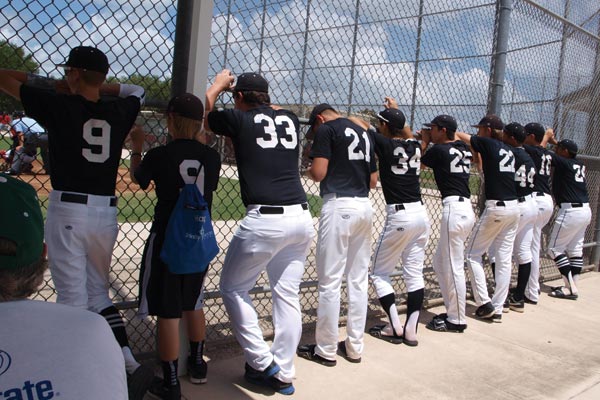
The ball field of the Fort Myers (Fla.) Twins, of the rookie training Gulf Coast League, is situated next to the fields where the Florida Little League teams were playing a tournament in 2013. After their own game, these young players lined up to watch the professional Twins.
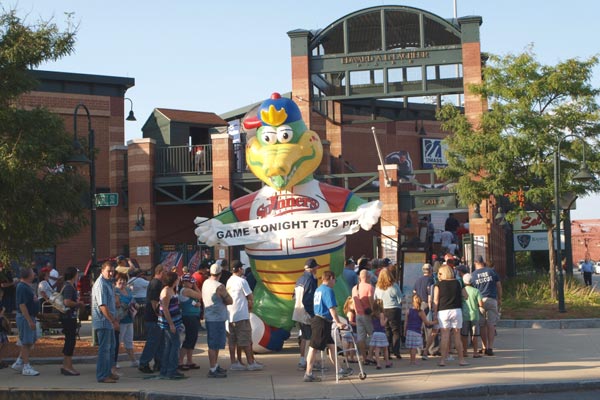
The evening we attended a Lowell (Mass.) Spinners game, fans were greeted by this giant blowup of Canaligator, the mascot.
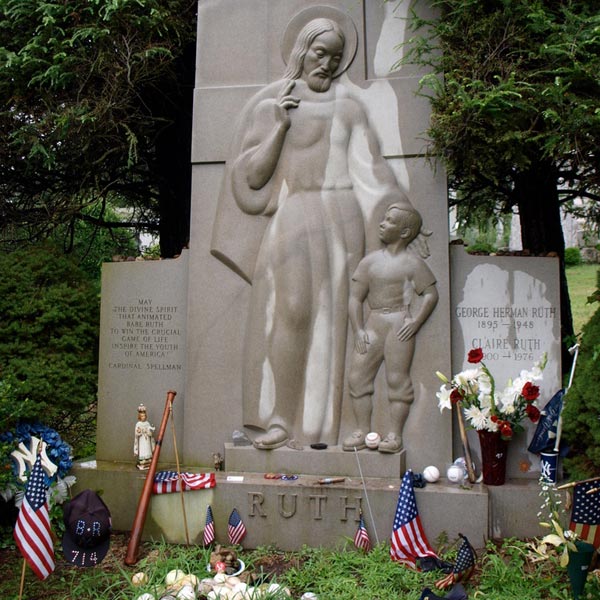
In 2012, at the Gate of Heaven Cemetery in Hawthorne, N.Y., we joined other baseball fans in visiting the grave of the great Babe Ruth. The cemetery, the property of St. Patrick’s Cathedral, New York City, also holds the grave of former Yankees manager Billy Martin.
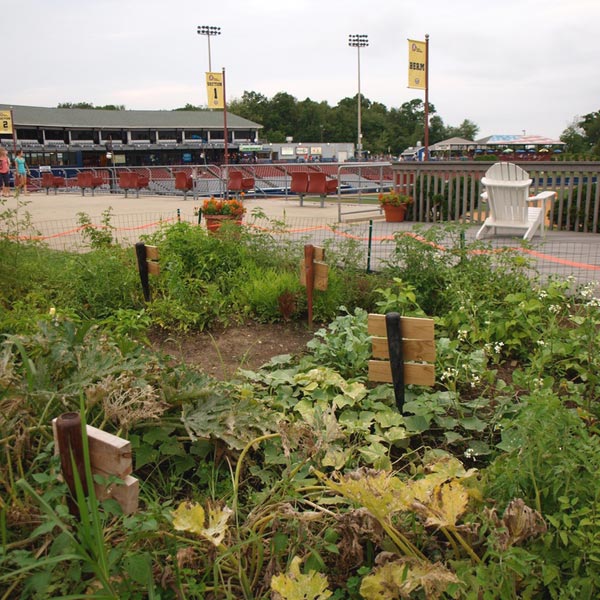
Sometimes the spaces beyond the outfields are used in interesting ways, for instance, as play areas for kids, to house carousels, or as gardens, as seen here at the Connecticut Tigers field in Norwich, Conn.
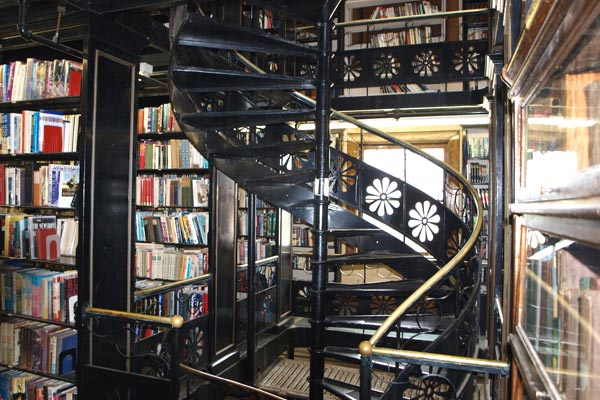
We stumbled across this former Carnegie Library in Parkersburg, West Virginia, in 2009. The Trans Allegheny Bookstore was housed in the old library from 1985 until it closed in 2010. The building included the original fireplaces, spiral staircases, and glass block floors.
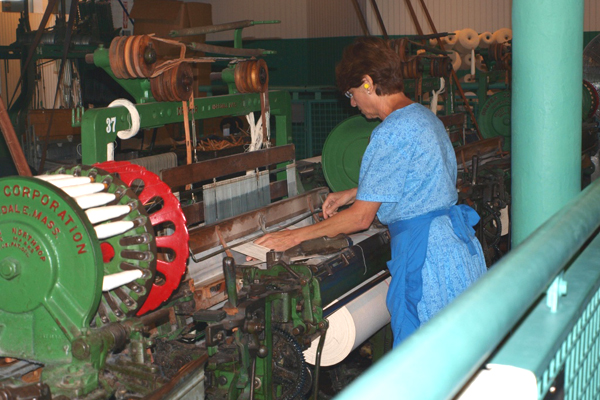
Lowell, Mass., was at one time the U.S. center of textile making. Here, at the Boott Cotton Mills Museum, a part of the Lowell National Historical Park, we watched a docent use some of the original machinery to make new fabric.